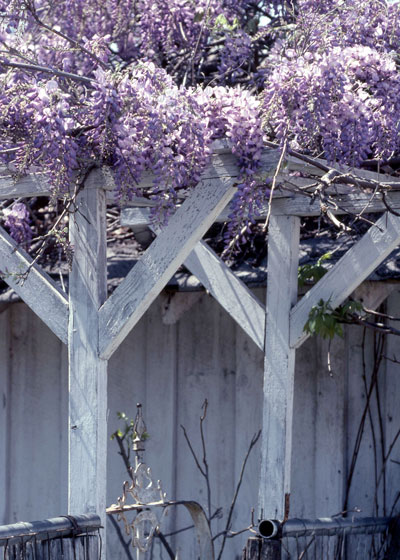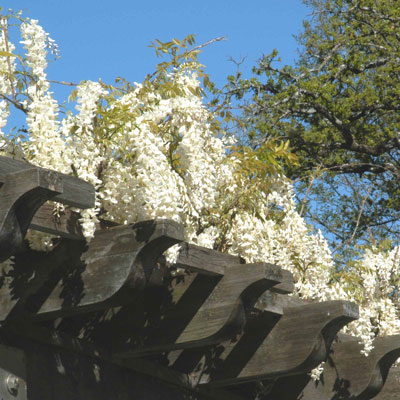Question of the Week 2: March 9, 2017

Photo: Wisteria blooming at abandoned farmstead near Grand Saline.
“Neil, why won’t my wisteria bloom?”
That’s a difficult question about a really popular vine. It’s one I hear dozens of times every spring. As a tough old prof once told me in college, when you’re trying to track down the solution to a plant problem, look to what the plant prefers and see where you’ve wandered off course.
• Sunlight. Wisterias will tolerate a bit of afternoon shade, but their best blooms will always be when they’re grown in full, or nearly full, sun.
• Soil. Wisterias do best in deep, well-draining and highly organic soils. Because of their need for higher levels of soluble iron, wisterias are least satisfied with shallow, alkaline, chalky soils that generally parallel Interstate 35 clear across Texas. Put in other terms, the farther west you go in Texas, the more challenging wisterias are.

Photo: White wisterias are less common, but very attractive.
• Pruning. Any trimming you do to wisterias should be done immediately after they flower (or should have bloomed) in the spring. That gives them the rest of the spring and summer to grow new stems on which the following year’s flower buds will begin to form in September. Do not prune them from fall through that flowering time.
• Mother plant. Maybe the plant from which your wisteria was propagated was a poor bloomer, and that trait could have been handed down via cuttings.
The solution? Correct any management errors. And, try root-pruning your plant in early September. Use a sharpshooter spade to cut a slit 18 inches out from the trunk and all the way around. By cutting the lateral roots, you may shock the plant into setting flower buds for the following spring. It might help. It can’t hurt.
